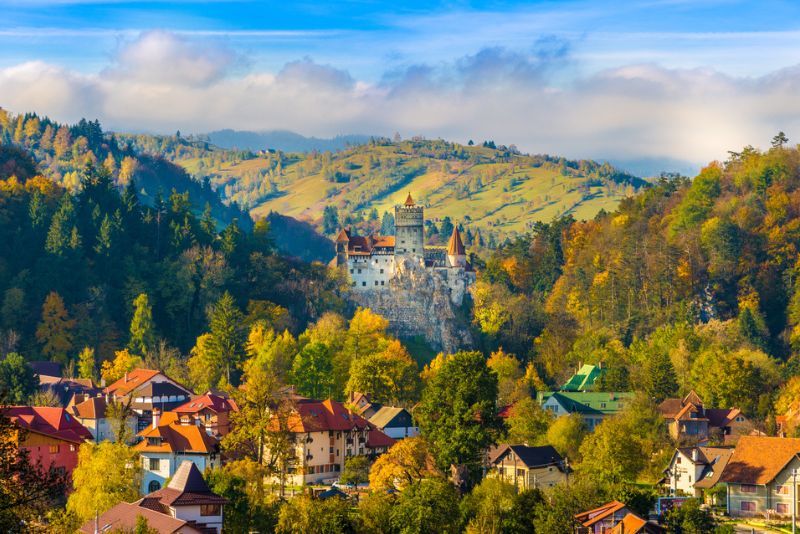Cluj-Napoca Tours
Discover 113 tours and activities in Cluj-Napoca
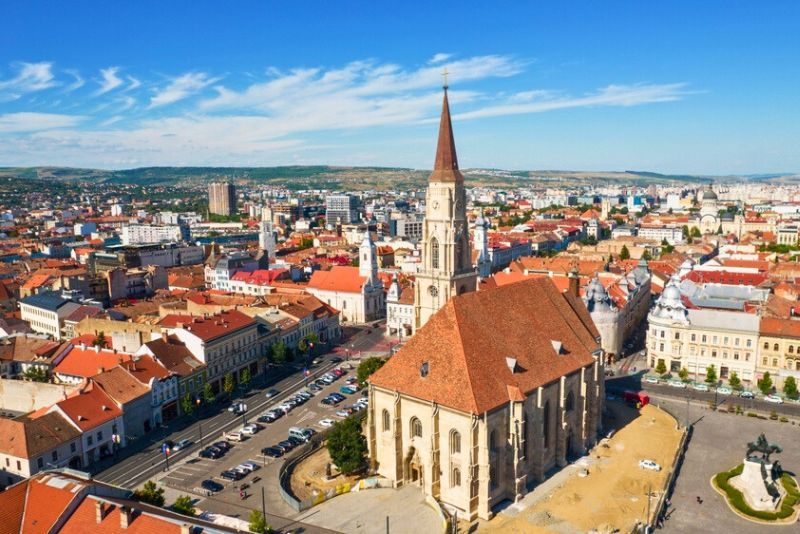
Categories
- Turda Salt Mine: Day Trips and Tours from Cluj-Napoca(333 reviews)
4.8
- Corvin Castle: Day Trips and Tours from Cluj-Napoca(187 reviews)
4.8
- Alba Carolina Fortress: Day Trips and Tours from Cluj-Napoca(147 reviews)
4.8
- Transylvania: Day Trips and Tours from Cluj-Napoca(69 reviews)
4.9
- Sighisoara: Day Trips and Tours from Cluj-Napoca(48 reviews)
4.9
- Maramures: Day Trips and Tours from Cluj-Napoca(46 reviews)
4.9
- Biertan: Day Trips and Tours from Cluj-Napoca(44 reviews)
4.9
Legend 
The 6 Best Cluj-Napoca Tours
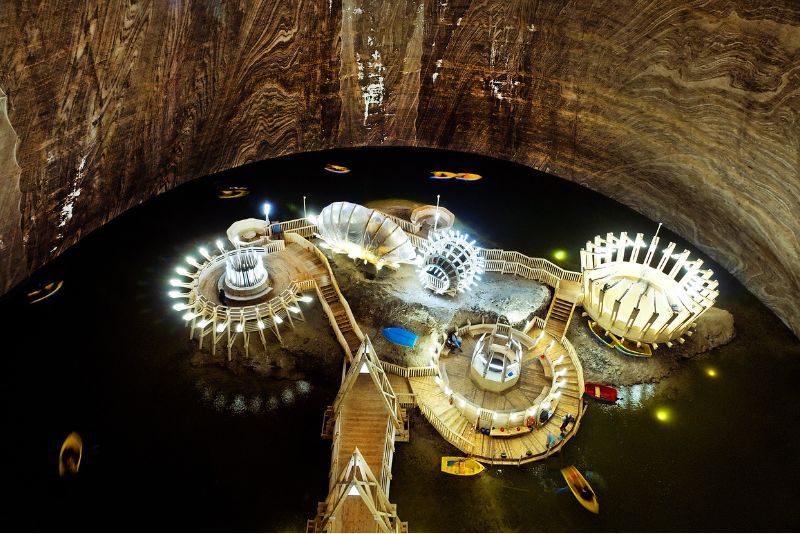
Often featured on Cluj-Napoca tours, the Turda Salt Mine is one of the most dramatic and unusual attractions in Romania. Descending into this natural cavern is like entering a magical subterranean world – one that comes with glittering walls and ceilings.
As you walk around the vast gallery and explore the mining chambers, you'll learn about the economic and historical importance of the salt industry. It's a source of national pride as well as local prosperity. Your guide will regale you with urban legends to bring this enchanting underworld to life.
To delve a little deeper into the mysterious salt mine realm, several unexpected activities are available. Take a boat ride on Theresa Mine Lake and keep an eye out for the salty waterfall and mesmerizing salt efflorescence. Don't leave without enjoying a spin on what may be the world's only underground Ferris wheel.
Most excursions to Turda Salt Mine last half a day. Longer trips are available if you want to incorporate places like Corvin Castle and the Alba Carolina Fortress.
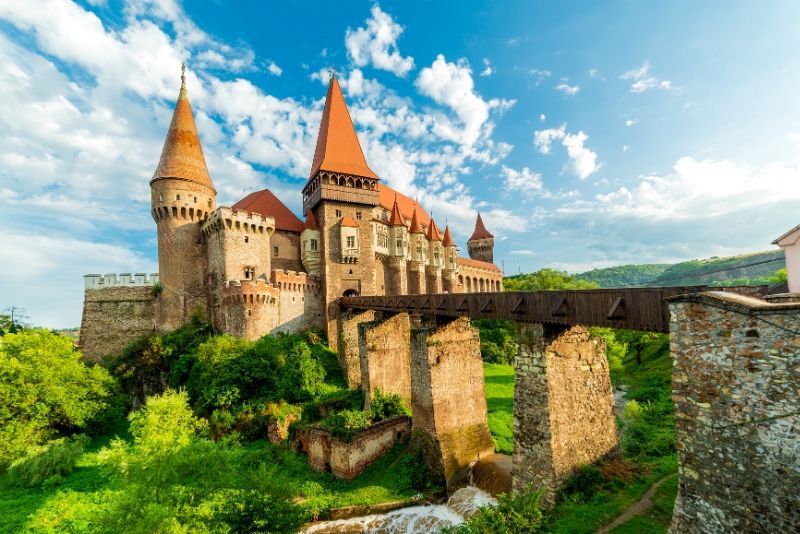
Corvin Castle is one of Europe's biggest fortresses – it's even larger than Bran Castle and Peles Castle. Transylvania's top stronghold has fairy tale appeal, with its striking red roofs and imposing towers. You can live out your childhood fantasies while exploring Corvin Castle, just like a modern-day prince or princess.
Built in the Gothic-Renaissance style, Corvin Castle dates to the 15th century and boasts a long and tumultuous history. It played a key role in defending the nation from the Ottoman invaders and is said to have inspired Bram Stoker's Dracula novel. Legend has it that the notorious Vlad the Impaler was once imprisoned here too.
You might recognize Corvin Castle from the big screen. It's been used as a filming location for movies like Ghost Rider, Dragonheart and The Nun. See if you can spot where key scenes took place.
The nearby Alba Carolina Fortress is often included on a day trip to Corvin Castle. This star-shaped citadel is known for its military architecture and is home to everything from museums to churches.
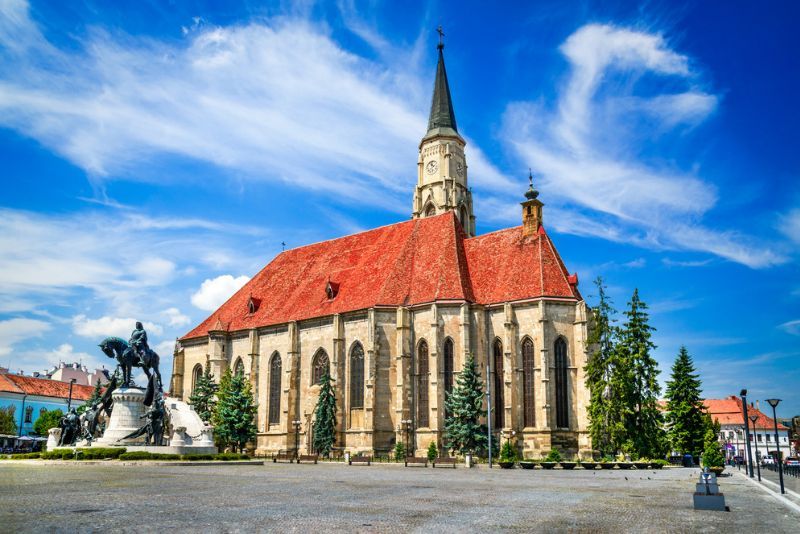
While you're staying in Cluj, take some time out to see the city itself. It's best to explore with a local guide, so you get to know more about the history and culture of this appealing settlement.
Most Cluj-Napoca tours take place on foot, as this is the ultimate way to discover iconic sights and hidden gems. You'll delve down narrow alleyways and come across secret squares on your quest for a bit of urban adventure. Excursions last a couple of hours, so comfortable footwear is advisable.
As you wander through the Baroque city center, you'll stop at key landmarks for photos and some background information from your guide. Highlights include the Gothic St. Michael's Cathedral and the Banffy Palace – the latter is home to an art gallery.
You'll also stroll down the unusual Mirror Street, named because the buildings on either side have been constructed in perfect symmetry. Keep your camera handy! The final stop is the National Museum of Transylvanian History, and most tours include your entrance fee.
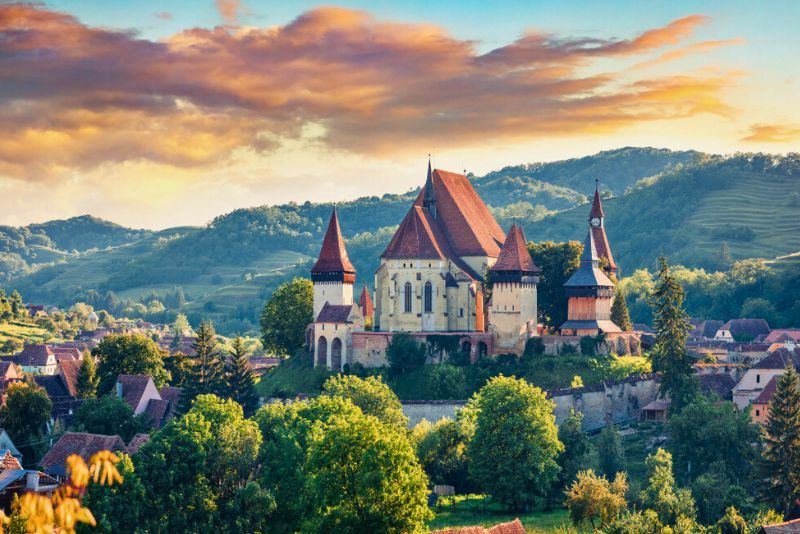
The rural Transylvania region is known for its traditional gypsy communities. These immersive Cluj-Napoca tours are your chance to meet some of the local people and learn more about their lives. Excursions last a full day and take in medieval villages and fortified churches along the way.
First up is a scenic drive to the historic city of Medias. Here, you'll explore the Citadel of Light and check out the 15th-century architecture. The visit continues to Biertan church – an impressive UNESCO-listed site enclosed by imposing medieval walls.
The ancient citadel of Sighisoara is your next stop. This atmospheric settlement is still inhabited and has everything from a Clock Tower to a torture chamber to explore. Check out the history museum and the Hill Church before you leave.
During your trip, you'll visit a gypsy community, where the diverse ethnic roots stem from Romanian, Hungarian and German heritage. Discover the age-old craft of copper smithing and chat with the locals to find out about gypsy culture. It's an eye-opening and heart-warming experience.
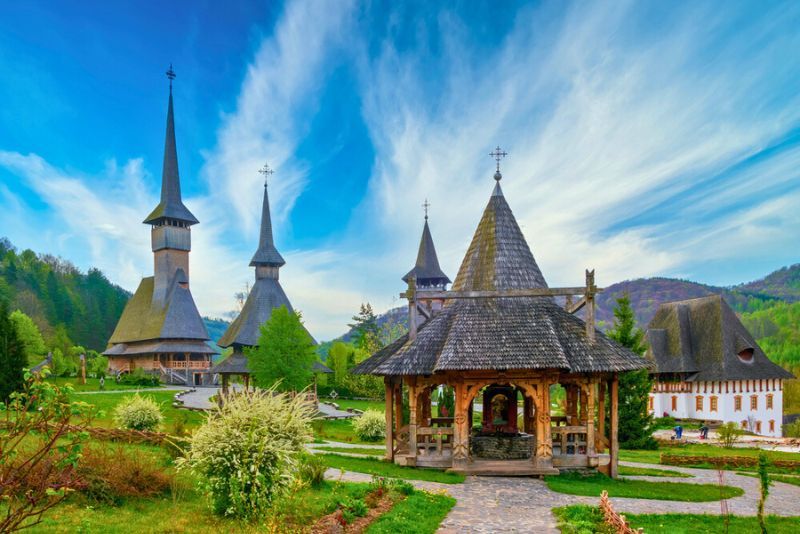
Looking for a multi-day trip from Cluj-Napoca? Maramures is a popular destination for travelers wanting to experience both nature and culture. This picturesque region in northern Romania sits in the Carpathian Mountains, with river valleys and pristine woodlands setting the scene.
Maramures is a rural area, and the way of life here has changed little over the centuries. You'll pass through charming villages where traditional timber houses with hand-carved gates line the streets. Wildlife is prevalent in Maramures too – brown bears roam the forests between spring and fall.
The wooden churches are the settlement centerpieces and remain an integral part of modern-day life. You'll visit one of the churches and see local artisans practicing their crafts during your stay. People here often wear folk costumes on Sundays, so keep an eye out if you're visiting at the weekend.
You'll spend the night in an authentic local inn for the full Maramures experience. This is your chance to try some of the delicious regional cuisine and fully immerse yourself in local heritage.
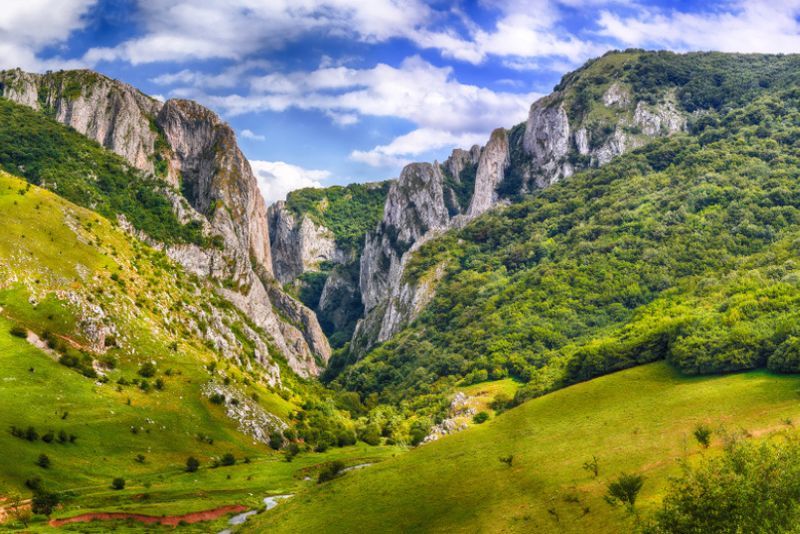
To fully appreciate the natural beauty of the Transylvania region, lace up those boots and hit the trails. These Cluj-Napoca tours are led by an expert local guide, so you don't need to worry about getting lost. Trips last between 5 hours and several days, depending on how energetic you're feeling.
You'll be heading deep into the wilderness of the Carpathian Mountains, breathing in the fresh air and enjoying the panoramic views. The pace will be steady, with plenty of photo stops along the way.
Rodnei Mountains National Park is a popular spot, where you can bag the region's highest peak – Pietrosul Rodnei. For something even more dramatic, head to Turda Gorge and hike through the striking karst landscape. Cave explorations and rocky scrambles are both on the cards.
If you want to escape the crowds, venture out to the Vladeasa Mountains on a private excursion. This is the place to come if you fancy trekking through remote villages and dense forests. Take in the sunset at Rachitele Waterfall before returning to Cluj.

Looking for more tours?
Planning your visit to Cluj-Napoca
About Cluj-Napoca
Cluj-Napoca is the unofficial capital of Transylvania in Romania. Surrounded by hills and located in the heart of this rural region, the city makes a handy base for exploring the wider area. Cluj-Napoca itself has plenty to offer the culturally curious visitor too, with everything from classical architecture to modern restaurants on the agenda.
Like many cities in Romania, Cluj-Napoca has a long and rich history. It was first inhabited back in 200 B.C. before later becoming a Roman fort settlement under the rule of Emperor Marcus Aurelius. Meanwhile, rumor has it that the region's olive trees sprung from the olive stones left behind by Ottoman Army soldiers during the siege of 1609.
Cluj-Napoca is a university town, so you'll probably notice a lot of students strolling around the city. There's a vibrant and forward-thinking atmosphere here in the ancient streets, where history and modernity happily sit side by side.
This buzzing city is known for its music festivals, as well as the world-class clubs that come to life after dark. Whether you want to party the night away, browse art galleries or soak up the past, Transylvania's most famous city has something for everyone. Stay a few days to take it all in.
Good to know before arriving
Affectionately known as "Cluj", Transylvania's main city is easy to get around. The old town sights are best visited on foot, and it's not far to walk between the top attractions. Taxis are available for short journeys to and from your hotel.
For longer trips, buses are frequent and will take you to many of the major tourist destinations. It may be worth buying a multi-day pass if you're planning on using the bus a lot during your stay. If you're feeling energetic, you can explore by bicycle instead – there are plenty of rental companies dotted around the city.
Most first-time visitors stay in the old town. Here, you'll be close to the popular landmarks as well as the restaurants and bars. Accommodation ranges from sociable hostels and apartments to guest houses and boutique hotels.
If you're looking for a cheap place to stay, you could consider booking a room in the train station district. This is a convenient location for onward transport links if you're heading off to other places in Romania like Brasov or Bucharest.
The best time to visit Cluj-Napoca is between May and September when temperatures are warm. To avoid the crowds, come in April or October instead.
Places and experiences that cannot be missed
On your first day, head to the main square – Piata Unirii – to admire the Renaissance and Baroque architecture. This area of the old town is the focus of most Cluj-Napoca tours.
There are plenty of Gothic buildings around the square, including the 15th-century St. Michael's Church. Don't miss the nearby Banffy Palace which is home to the Cluj Art Museum – it's one of the finest collections in Romania.
If you're in the city during summer, why not take in one of the famous music festivals? Electric Castle is held in July each year in Banffy Castle while Jazz in the Park takes place in town during September.
For restaurants and shops, the old town is the place to go. There's a lively bar scene too, with everything from craft beers and inventive cocktails on the menu. The coffee culture is strong here, and you'll discover lots of atmospheric cafés to enjoy a freshly roasted blend in the historic center.
Traveling on a budget? Cluj-Napoca is a student city, which means there is plenty of affordable accommodation and food available. For free things to do, head up Cetatuia Hill for the sweeping views or enjoy a stroll and a picnic in Central Park.

